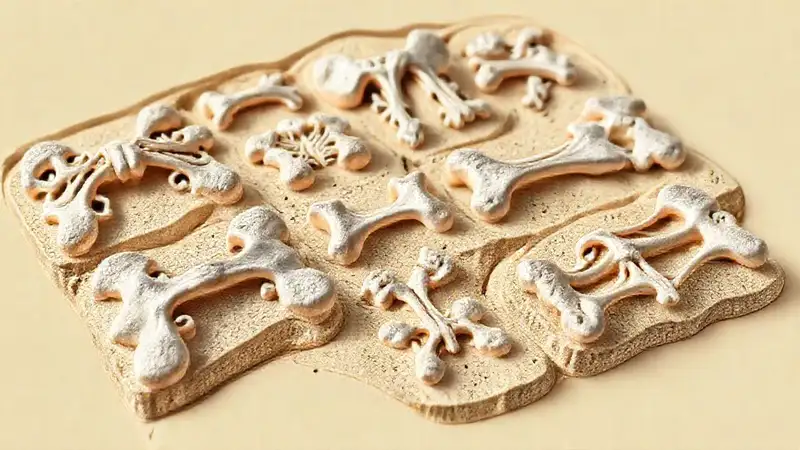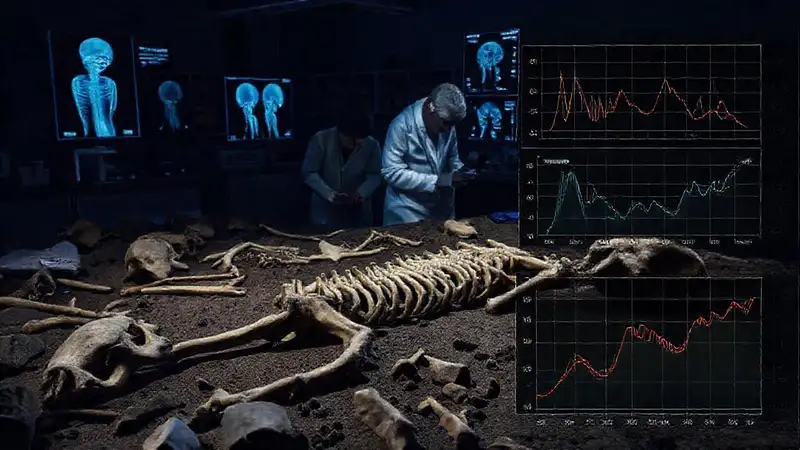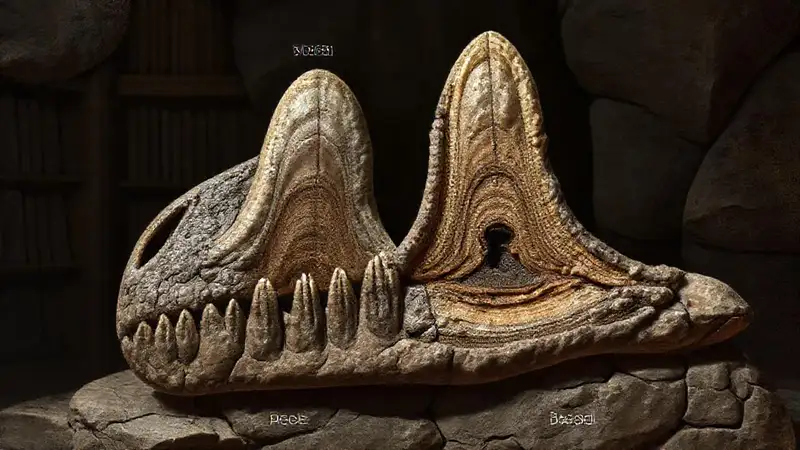Dinosaur bonebeds have revolutionized our understanding of dinosaur life, offering a window into the challenges and dangers they faced. Initially, these fossilized accumulations of bones were often viewed simply as 'waste disposal sites,' a convenient place for deceased dinosaurs to end up. However, a shift in perspective, driven by advanced analytical techniques and a greater appreciation for paleoenvironmental contexts, has revealed that many bonebeds represent far more dramatic events – mass mortality episodes. These aren’t just scattered remains; they’re concentrated deposits reflecting sudden, catastrophic deaths of large numbers of individuals. The study of these sites is crucial for reconstructing past ecosystems and testing hypotheses about dinosaur behavior, physiology, and interactions with their environment.
The study of dinosaur bonebeds is inherently complex, demanding a multidisciplinary approach. Paleontologists, geologists, sedimentologists, and even biomechanical experts now collaborate to piece together the narratives of these extraordinary events. Understanding the formation process, the animal affinities involved, and the potential causes of these deaths provide insights into dinosaur vulnerability, social behavior, and, ultimately, the dynamic nature of the Mesozoic world. Advances in preservation techniques, coupled with sophisticated dating methods, continue to refine our comprehension of these pivotal moments in paleontological history.
Types of Bonebeds and Their Formation
Different bonebeds exhibit distinct characteristics, suggesting varying formation processes. Simple bonebeds typically consist of a jumbled mixture of bones, with little sediment matrix. These often indicate scavenging or fluvial transport after a relatively quick and localized event, like a flash flood or a predator ambush. More complex bonebeds, on the other hand, are characterized by a substantial amount of sediment – silica or mudstone – that surrounds and embeds the bones. This sediment suggests a more prolonged depositional process, potentially involving prolonged burial and reworking by water currents.
Furthermore, the degree of bone articulation – the way the bones are connected – provides valuable information. Highly articulated bonebeds, where bones are still joined together, point to rapid burial, likely by mudflows or landslides. Conversely, disarticulated bonebeds, where bones are scattered and separated, usually indicate a more gradual process, potentially involving scavenging or fluvial scouring after the initial event. Analyzing the sediment composition and bone morphology alongside the articulation patterns helps paleontologists to differentiate between these different scenarios.
Finally, the presence of cut marks on bones can offer crucial clues. These marks, often interpreted as tooth marks, suggest predation or feeding behavior. However, it’s essential to carefully distinguish these marks from secondary damage caused by weathering or bioturbation (disturbance by organisms) after burial. Careful taphonomic analysis, considering all the potential stages of fossilization and degradation, is therefore paramount for accurately interpreting the nature of a bonebed and the events that led to its formation. The sediment’s origin can be particularly informative.
Paleoenvironmental Context and Bonebed Formation
The surrounding paleoenvironment plays a critical role in determining the characteristics of a dinosaur bonebed. For example, bonebeds found in arid or semi-arid environments – often referred to as “dry” bonebeds – frequently exhibit evidence of flash floods and rapid burial by sediment carried by ephemeral streams. These events are often associated with dramatic climate shifts, such as periods of intense rainfall following prolonged drought. Conversely, bonebeds found in floodplain settings – such as river deltas – may represent events linked to more gradual inundation and sediment deposition, potentially tied to tectonic activity or sea-level fluctuations.
The degree of vegetation around the bonebed also provides insights. The presence of fossilized plant material can help reconstruct the local climate and landscape, and may even indicate the type of disturbance that led to the mass mortality event. Analyzing the pollen record, in particular, is invaluable. Furthermore, paleomagnetic data can be used to determine the age of the sediments surrounding the bonebed, allowing for precise dating of the mass mortality event and its relationship to broader geological cycles.
Understanding the broader landscape context, including the presence of faults, volcanic activity, or large rivers, can reveal potential triggers for these catastrophic events. These events aren’t always due to simple natural disasters; they could have been triggered by volcanic eruptions, meteorite impacts, or even changes in river courses. Careful integration of geological and paleontological data is vital for a complete understanding of the factors that contributed to the formation of each bonebed.
Taxonomic Composition and Dinosaur Behavior

Analyzing the taxonomic composition – the types of dinosaurs present – within a bonebed provides invaluable information about their behavior and ecological relationships. The presence of multiple species often suggests a complex social structure, possibly involving herding behavior or cooperative defense against predators. The relative abundance of each species can also shed light on their vulnerability and their role within the ecosystem – perhaps one species was more susceptible to the particular threat.
The location of bones within the bed can suggest feeding behaviors. Bones positioned near the center of the deposit might indicate scavenging, while those along the edges could be associated with predation or territorial disputes. Studies of bone orientation, and the direction of fracture, can even provide clues about the mechanics of the injuries sustained during the event. Examining the bone microstructure—the tiny lines of growth—can give information about the dinosaur’s age and state of health.
Interestingly, some bonebeds contain fossils from different dinosaur genera – representing a wide range of body sizes and ecological roles – suggesting that the event impacted a diverse group of animals. This points to a potentially widespread event, rather than a localized impact on a single species. This diversity highlights the complex interactions between different dinosaur species within the ecosystem and the potential for cascading effects during mass mortality events.
Taphonomy – The Journey of the Bones
Taphonomy – the study of processes affecting the preservation of fossils – is absolutely critical for interpreting dinosaur bonebeds. This field examines all the steps involved, from the death of the animal to its eventual fossilization. Understanding the potential processes of decay, scavenging, transport, and burial is essential for determining the original context of the bones and whether the bonebed represents a genuinely mass mortality event or simply a contaminated deposit.
Factors like temperature, humidity, and oxygen levels all play a crucial role in the preservation of bones. The type of sediment in which the bones are embedded can also significantly affect their preservation. For instance, highly cemented sediments can preserve bones in remarkable detail, while loose, sandy sediments may result in significant degradation. Careful analysis of these processes can help paleontologists reconstruct the post-mortem history of the bones and determine the integrity of the bonebed.
Ultimately, a robust taphonomic analysis helps to distinguish between genuine mass mortality events and taphonomically ambiguous deposits. By meticulously documenting all the steps involved in the fossilization process, researchers can gain a more accurate understanding of the events that led to the formation of a dinosaur bonebed and its significance in reconstructing past ecosystems.
Conclusion
Dinosaur bonebeds have moved beyond simple curiosity to become fundamental tools for paleoecological research. They are increasingly recognized not as mere 'waste dumps,' but as pivotal records of catastrophic events, providing unparalleled insights into the perils faced by dinosaurs and the dynamics of their ancient environments. The study of these deposits continues to yield exciting new discoveries and refine our understanding of dinosaur evolution and ecology.
As our analytical techniques become more sophisticated and our fossil record continues to grow, the potential for uncovering new and previously unrecognized bonebeds is substantial. Continued research in this area will undoubtedly further revolutionize our understanding of dinosaur life and the Mesozoic age, solidifying their place as crucial components of the fossil record. A holistic approach, integrating geological, paleontological, and taphonomic data, is crucial to fully unlock the secrets these remarkable sites hold.





Deja una respuesta